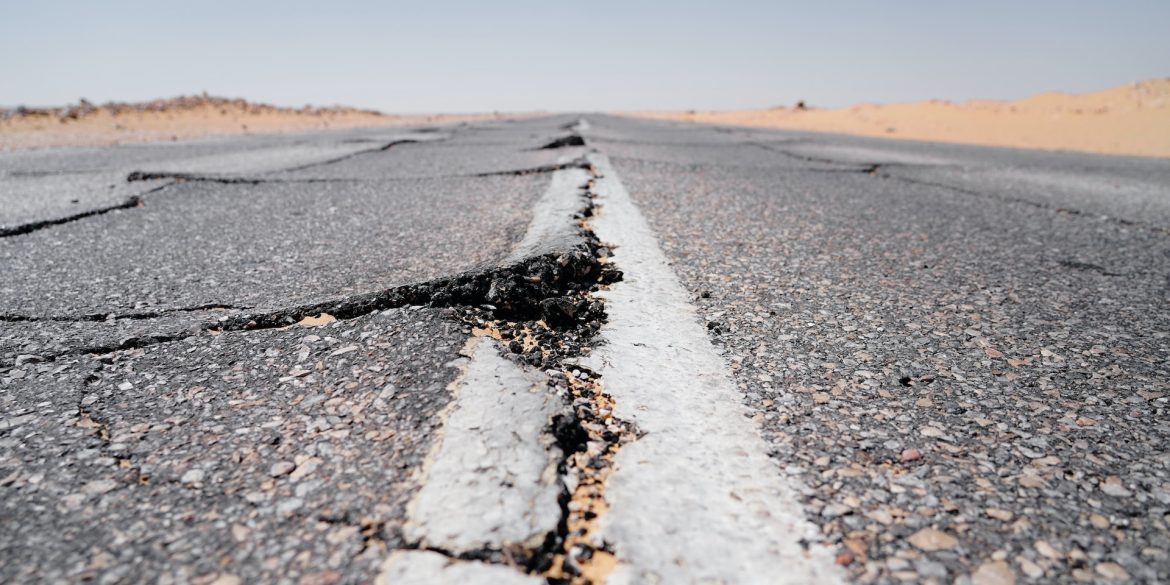
In a new study, the conventional understanding of soil liquefaction is being challenged, significantly reshaping our comprehension of earthquake-related soil deformation. Traditionally, soil liquefaction has been linked to undrained conditions near earthquake epicentres, but this research reveals that liquefaction can take place under drained conditions, even at considerably lower seismic-energy density levels. This discovery sheds new light on far-field liquefaction events that have long perplexed scientists. The study highlights how seismic shaking, even in drained conditions, triggers interstitial fluid flow within the soil, leading to the accumulation of excess pore pressure gradients and the subsequent loss of soil strength. Drained liquefaction unfolds rapidly, guided by the propagation of a compaction front, with its speed determined by the rate of seismic-energy injection. These findings mark a profound shift in our understanding of soil liquefaction, empowering us to conduct more precise assessments of its potential and associated risks, ultimately bolstering efforts in earthquake engineering and preparedness.
Soil liquefaction, a destructive phenomenon occurring during earthquakes, has traditionally been associated with undrained conditions near the earthquake epicentre. However, new research conducted by Dr. Shahar Ben-Zeev at The Hebrew University of Jerusalem and the University of Strasbourg has unveiled a remarkable discovery – liquefaction can occur under drained conditions even at remarkably low seismic-energy density levels. This research offers a comprehensive explanation for earthquake far-field liquefaction events that have long puzzled scientists.
Soil liquefaction is a natural hazard that commonly occurs during earthquakes. Liquefaction is one of the most catastrophic earthquake-related phenomena. During and after liquefaction, buildings and infrastructures sink, float and tilt, ground might spread and crack, settle, or initiate a landslide. Liquefaction damage often leads to extensive human casualties, destruction of lifelines, and economic losses that may result in the complete abandonment of formerly inhabited areas, posing a significant challenge to community resilience.
Traditionally, liquefaction has been understood as a predominantly undrained process that occurs under high-energy density conditions. This conventional view left many earthquake liquefaction events unexplained, particularly those occurring far from the earthquake epicentre, where energy density is significantly lower.
Dr. Shahar Ben-Zeev, guided by Prof. Einat Aharonov from The Hebrew University of Jerusalem, Prof. Renaud Toussaint from the University of Strasbourg, and Prof. Liran Goren from Ben Gurion University, conducted this research, challenging conventional wisdom. Their findings demonstrate that liquefaction can indeed occur under drained conditions, even at low seismic-energy density levels. Seismic shaking, under drained conditions, facilitates interstitial fluid flow within the soil, leading to the development of excess pore pressure gradients and subsequent soil strength loss. Drained liquefaction occurs rapidly and is influenced by the rate of seismic-energy injection.
These findings have important implications for our understanding of soil liquefaction. By considering soil liquefaction under a spectrum of drainage conditions, we can now more accurately assess its potential and associated hazards. This research opens new doors for earthquake engineering and preparedness, assisting in the mitigation of risks associated with soil liquefaction in regions vulnerable to seismic activity.
What sets this study apart is its unique combination of theoretical work, numerical simulations, and experimental validation.
Furthermore, in an era marked by a continual increase in the construction of reclaimed land and artificial islands, both highly susceptible to soil liquefaction, this research becomes even more pertinent.
As most of the past earthquakes occurred before the modern instrumental era, seismologists rely heavily on the interpretation of geological features to compile complete earthquake catalogs. This groundbreaking study fundamentally shifts our understanding of the conditions that may have caused liquefaction-related geological features, hence calling for revising the estimated earthquake magnitude calculated by standard methods.
Dr. Shahar Ben-Zeev’s work significantly contributes to our understanding of earthquake-induced soil liquefaction and emphasizes the need to reevaluate liquefaction potential assessments. This research offers invaluable insights into addressing one of the most destructive consequences of earthquakes, providing hope for enhanced resilience in earthquake-prone areas.
In summary, comprehending soil liquefaction is crucial as it directly affects public safety, infrastructure resilience, water resources, and the ability to manage and mitigate earthquake consequences in susceptible regions. This research substantially advances our understanding, offering vital insights for earthquake safety and disaster preparedness.
The study, titled “Drainage explains soil liquefaction beyond the earthquake near-field” has been published in Nature Communications and can be found here.
Date of publication: 27/9/23 10:00 London Time
Researchers
Shahar Ben-Zeev1,2, Liran Goren3, Renaud Toussaint2,4, and Einat Aharonov1,5
Institutions
1-Institute of Earth Sciences, The Hebrew University of Jerusalem, 91904, Israel
2-Universit´e de Strasbourg, CNRS, ENGEES, Institut Terre & Environnement de Strasbourg
3-The Department of Earth and Environmental Sciences, Ben-Gurion University of the Negev
4-PoreLab, the Njord Centre, Department of Physics, University of Oslo
5- Departments of Geosciences and Physics, The Njord Centre, University of Oslo
The Hebrew University of Jerusalem is Israel’s premier academic and research institution. With over 25,000 students from 90 countries, it is a hub for advancing scientific knowledge and holds a significant role in Israel’s civilian scientific research output, accounting for nearly 40% of it and has registered over 11,000 patents. The university’s faculty and alumni have earned eight Nobel Prizes and a Fields Medal, underscoring their contributions to ground-breaking discoveries. In the global arena, the Hebrew University ranks 86th according to the Shanghai Ranking. To learn more about the university’s academic programs, research initiatives, and achievements, visit the official website at http://new.huji.ac.il/en
